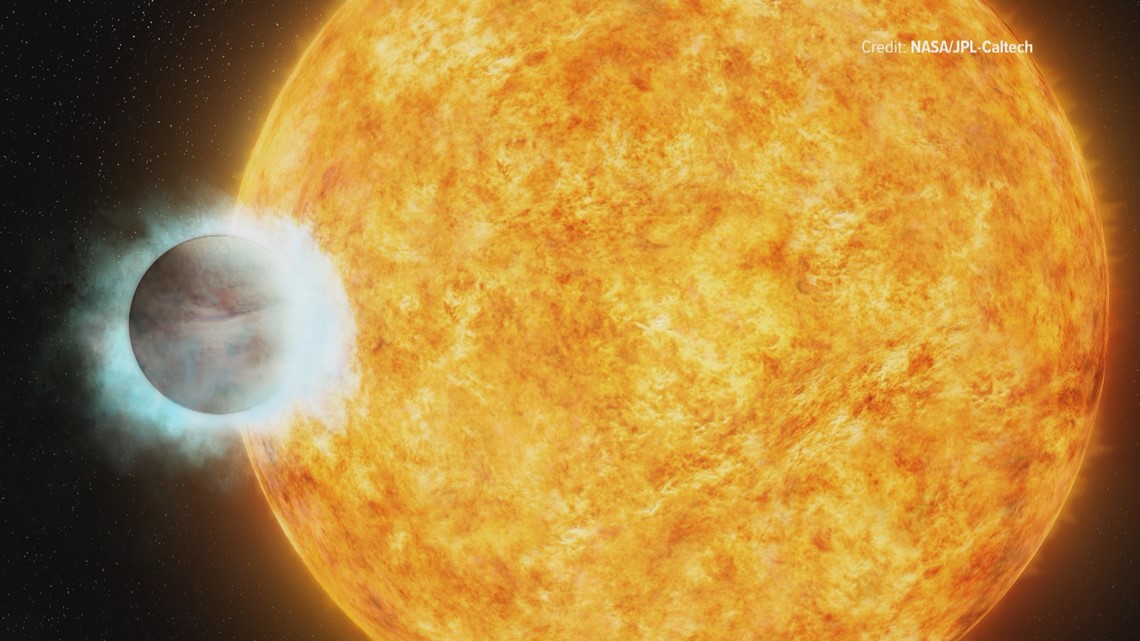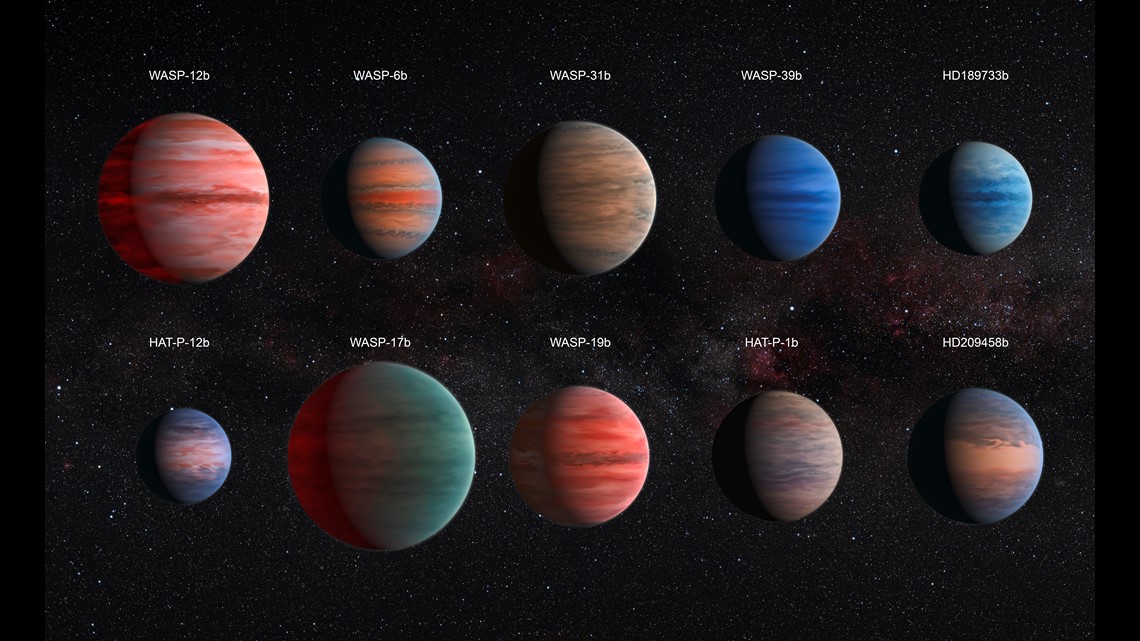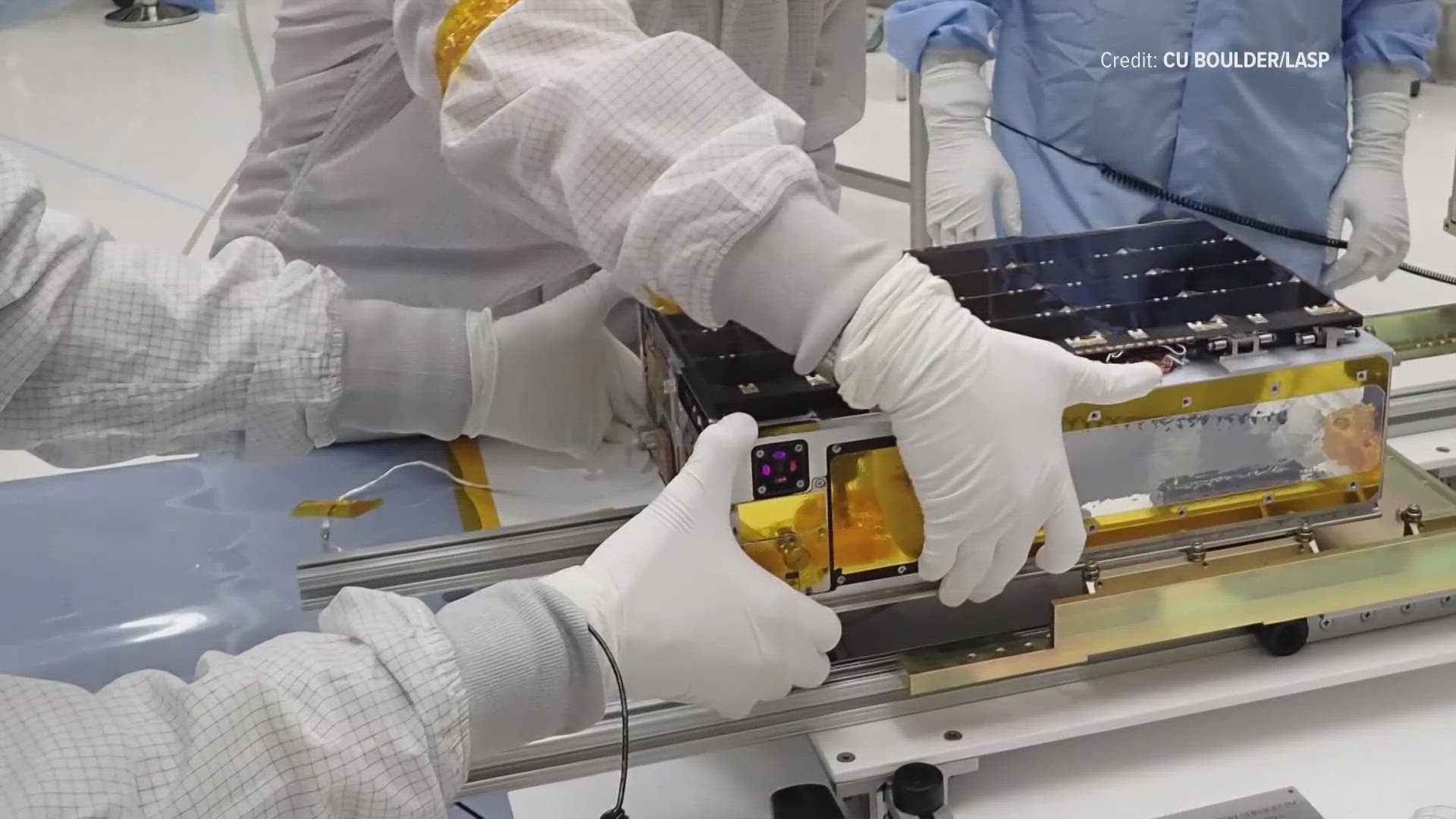BOULDER, Colo. — Planets known as Hot Jupiters get their name from the very turbulent environments in which they exist.
They are exoplanets (planets outside of the Solar System) that are all in very close proximity to their parent star. Even closer than Mercury is to the Sun. In some cases, atmospheric temperatures can reach up to 15,000 degrees Fahrenheit.


And they are moving extremely fast – going all the way around their star in just a few Earth days.
“It’s probably driving crazy rapid winds on these planets,” said CU Boulder Astrophysical and Planetary Sciences professor Kevin France. “And there are probably extreme auroral displays on these planets.”
France said hot Jupiters are in solar systems hundreds of light years or trillions of miles from earth, and they are gas giant planets that look a lot like Jupiter in our solar system.
In many instances, the extreme radiation and turbulence from their environments are rapidly stripping away their atmospheres, which are probably made up mostly of Helium and Hydrogen.
He said the atmospheric loss rate is around 100 million kilograms per second.
“But it turns out with a Jupiter-size planet, there’s a lot of mass to lose,” said France. “So overall, these planets are probably going to lose a few percent of their total mass over their lifetimes.”


But he said the loss of atmosphere on hot Jupiters might help answer some questions about our own solar system. Like how did Mars lose its ancient atmosphere? Or how did Earth’s atmosphere develop over time?
“We can study hot Jupiters easily now because they are big. Ultimately, where we want to head with this technique is to see what the atmospheres of earth-like planets are made of,” he said. “I think in the 2030’s and 2040’s we’re going to see an explosion of science in detailing life-supporting exoplanets.”
The Tiny Spacecraft
All of this big new hot Jupiter science is coming from a very small space probe that was built on the University of Colorado campus.
“The spacecraft itself is almost a first of its kind for this type of mission,” said France. “In a lot of ways, it’s an experiment to see if we can do exciting science in a small package.”
The petit probe is only about the size of a cereal box. France and his team named it the Colorado Ultraviolent Transit Experiment (CUTE).


CUTE’s shell was purchased from Boulder-based Blue Canyon Technologies. He said that includes stuff like the radios, the navigation system and the solar panels. The actual experiment that goes in it was designed and built at CU Boulder.
He said about 70% of the workforce behind the CUTE mission has been graduate or undergraduate students. That includes operating the spacecraft with is still being done on campus.


CUTE has been in earth-orbit since 2021 and has completed its original observations. France said it is scheduled to deorbit and burnup in Earths atmosphere sometime before the end of 2025.
SUGGESTED VIDEOS: Colorado Climate

